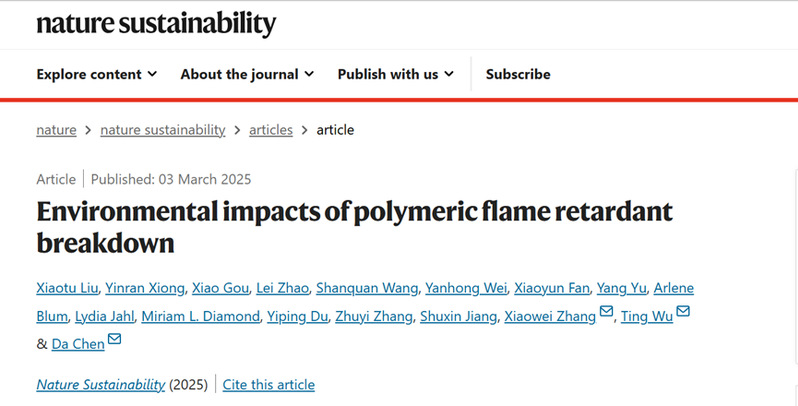- ABOUT JNU
- ADMISSION
-
ACADEMICS
- Schools and Colleges
-
Departments and Programs
- Arts College of
- Chinese Language and Culture College of
- Economics College of
- Electrical and Information Engineering College of
- Foreign Studies College of
- Information Science and Technology College of
- Environment School of
- Humanities School of
- International Business School
- International Studies School of
- Journalism and Communication College of
- Law School
- Liberal Arts College of
- Life Science and Technology College of
- Management School of
- Marxism School of
- Medicine School of
- Pharmacy College of
- Physical Education School of
- Science and Engineering College of
- Shenzhen Tourism College
- Research Institute
- Research Center
- Programs in English
- Majors
- Study Abroad
- Online Learning
- RESEARCH
- CAMPUS LIFE
- JOIN US
Latest News
Jinan University's Research Team Raises Concerns Over Environmental Risks of Polymer Flame Retardants
Publisher: College of Environment and Climate
Date: April 16, 2025
Professor Chen Da and Associate Professor Liu Xiaotu from Jinan University, along with their research team, have published a significant article titled Environmental impacts of polymer flame retardants in the prestigious journal Nature Sustainability. This study investigates the environmental behavior and toxicity of tetrabromobisphenol A-based polymers (polyTBBPAs), which are commonly used as flame retardants in electronic products.

(Screenshot of the paper)
Key Findings
As the use of traditional monomeric halogenated flame retardants has declined due to their known toxicity to humans and ecosystems, polymeric flame retardants have gained popularity as a safer alternative. However, their environmental fate and the toxicity of their breakdown products remain largely unexamined, creating challenges for risk management.
Using polyTBBPAs as model chemicals, the researchers revealed crucial insights into how these polymers decompose in the environment. The study highlights the following key findings:
?Breakdown Products: The team identified 76 breakdown products of polyTBBPAs, using an innovative non-target screening method called BrMiner. These products were found in environmental samples collected from electronic waste recycling facilities in South China, indicating significant environmental exposure.
?Increased Toxicity: Toxicity assessments conducted with zebrafish embryos demonstrated that the breakdown products of polyTBBPAs exhibit increased toxicity, primarily linked to mitochondrial dysfunction. This suggests that as these materials decompose, their harmful effects on aquatic life may intensify.
Implications
This research challenges the prevailing notion that polymer flame retardants are environmentally friendly. The findings stress the importance of reevaluating the safety and regulatory frameworks surrounding the use of these materials. The authors argue that both their environmental conversion and potential toxic effects should be thoroughly assessed to mitigate risks associated with polymer halogenated flame retardants.
Professor Chen Da serves as the co-corresponding author of this study, while Associate Professor Liu Xiaotu is one of the co-first authors. The research team also includes Master's students Zhao Lei (who has graduated), Professor Fan Xiaoyun, and Associate Professor Yu Yang, all from the College of Environment and Climate. This study has garnered support from the National Key Research and Development Program, the General Project of the National Natural Science Foundation of China, and the Guangdong Outstanding Youth Fund.
For further details, the full article is available:
https://www.nature.com/articles/s41893-025-01513-z#Abs1
NEWS
- About the University
- Quick Links
Copyright ? 2016 Jinan University. All Rights Reserved.




